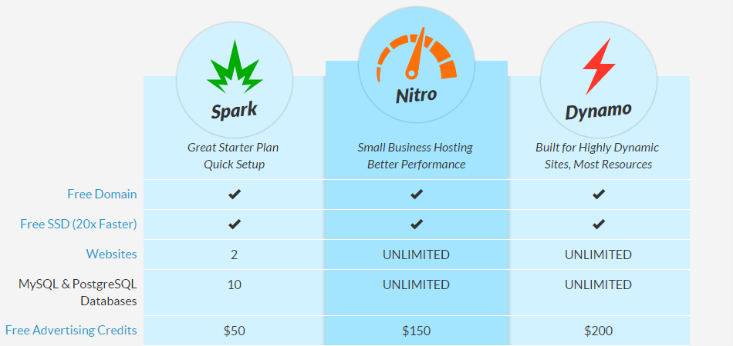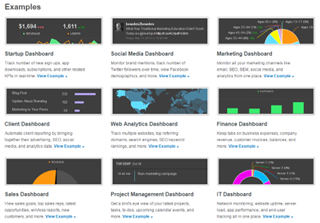MENU
Starting a Business
- Best Small Business Loans
- Best Business Internet Service
- Best Online Payroll Service
- Best Business Phone Systems
Our Top Picks
- OnPay Payroll Review
- ADP Payroll Review
- Ooma Office Review
- RingCentral Review
Our In-Depth Reviews
Finance
- Best Accounting Software
- Best Merchant Services Providers
- Best Credit Card Processors
- Best Mobile Credit Card Processors
Our Top Picks
- Clover Review
- Merchant One Review
- QuickBooks Online Review
- Xero Accounting Review
Our In-Depth Reviews
- Accounting
- Finances
- Financial Solutions
- Funding
Explore More
Human Resources
- Best Human Resources Outsourcing Services
- Best Time and Attendance Software
- Best PEO Services
- Best Business Employee Retirement Plans
Our Top Picks
- Bambee Review
- Rippling HR Software Review
- TriNet Review
- Gusto Payroll Review
Our In-Depth Reviews
- Employees
- HR Solutions
- Hiring
- Managing
Explore More
Marketing and Sales
- Best Text Message Marketing Services
- Best CRM Software
- Best Email Marketing Services
- Best Website Builders
Our Top Picks
- Textedly Review
- Salesforce Review
- EZ Texting Review
- Textline Review
Our In-Depth Reviews
Technology
- Best GPS Fleet Management Software
- Best POS Systems
- Best Employee Monitoring Software
- Best Document Management Software
Our Top Picks
- Verizon Connect Fleet GPS Review
- Zoom Review
- Samsara Review
- Zoho CRM Review
Our In-Depth Reviews
Business Basics
- 4 Simple Steps to Valuing Your Small Business
- How to Write a Business Growth Plan
- 12 Business Skills You Need to Master
- How to Start a One-Person Business
Our Top Picks
How To Expand Your Revenue Sources

Table of Contents
The best businesses have multiple sources of revenue. Expanding those sources doesn’t have to be a monumental task. When you have only one source of revenue, your business is at serious risk. Multiple revenue sources diversify your business and reduce that danger. Think about what even 10% more revenue would do for your business. Use this as the motivation to seek out new ways to expand revenues. Doing so may require you to think outside the box, but you’ll soon see the rewards as you increase your bottom line and make your business stronger.
Let’s take a look at some of the best ways to increase revenue.
1. Add services to existing product lines.
An easy first step is to expand on what you already have. Let’s say you launched a product line a year ago that has done well. What else could you release under the same banner that would add to your sales? Are there potential accessories or additional services that could attract your customers?
The trick here is to think not of what you could easily create, but what your customers could genuinely use. An example would be someone who sells custom bikes. Perhaps they also start selling an accessory kit with a bar lock, an attachable water bottle and a neon signal light for night riding.
The seller could offer this kit at checkout for an additional cost, or throw it in at a discount for new bike purchases. Suddenly, they have a new revenue stream that is genuinely helpful to the customer.
If all you offer is a digital product, there’s a way to expand your revenue to physical products. For example, start selling printed versions of your digital items. Print Me Poster, for instance, will handle both printing and shipping of photographs and posters for an added convenience.
Another example is My Social Book, which allows you to print out your digital Facebook page.

Image credit: My Social Book
3. Create membership tiers.
Services almost always offer different subscription tiers. These tiers are usually similar to the cable TV model: You pay for blocks of entertainment (the product) at different price levels. [Learn how to start a membership website from scratch.]
So if you were to offer a website builder, there could be a free version that allows a very basic website without any advanced tools, which will display the text “Built by XX Studio” at the bottom.
The next tier might offer some customization tools and a white label service. The final premium tier has analytics tools, personalized support, advanced building tools and maybe help from a designer.
Memberships are a great way to convert loyal customers into regular paying subscribers.
Once you give people a taste of what you do, they are more likely to go in for the advanced tools. Web Hosting Hub is a good example of this model.

Image credit: Web Hosting Hub
4. Target a new audience.
Maybe you should be expanding not your product line, but the streams of revenue from the customer side. While it is good practice to target a single demographic when you first launch, over time you may want to consider attracting new audiences with products, services or marketing aimed directly at them.
A good example is Netflix, which regularly narrows its focus on specific demographics based on its greenlit original series. If you go through its lineup, you can see where it has been attracting particular demographics with a different show meant to appeal to their tastes, age, gender, interests and more.
The tactic has been incredibly popular, and their shows have attracted more interest globally than any other online series generator, such as Amazon.
Another example of a company that has successfully expanded its target audience is Cyfe. It has partnered with an overwhelming number of online services so that you can connect your entire digital life inside one tool. The more services it partners with, the more it expands its customer base.

Image source: Cyfe
5. Offer incentives for referrals.
Nothing is quite as powerful as a referral from a current customer. It is your number one lead-generation tool, and you should always be expanding your referral programs. But people won’t necessarily recommend you to their friends or submit online reviews just because they like your product. You need to give them more incentive to do so.
That means telling them why their referral benefits them. Create customer loyalty by offering rewards such as coupons for discounts, free items or premium tools for their efforts and you will see your referrals increase overnight.
6. Give special perks for new accounts.
In addition to special offers for referrals, you can give rewards perks to people who are signing up for your service for the first time. You might offer a month of free services or a small gift. Pizza Hut, for instance, offers new Hut Lovers members a free order of cheese sticks after they sign up.
7. Try to match (then surpass) competitors.
If you’re trying to find out what customers are willing to pay for, there is no better source of information than your competitors. They are drawing people that you aren’t, so they must be doing something right.
Even competitors who are less successful than you can provide some insight into what other potential customers enjoy. Look at competitors’ services, perks or promotions, their methods of marketing, prices, and the demographics they target. Then aim to be even better.
8. Give something for free (but not for nothing).
One key content strategy is pay-with-a-share. For example, someone creates an e-book, either as an individual author or as a brand, and allows consumers to get it for free if they share the content on social media.
Or say someone hosts a webinar series and allows people to view or take part in exchange for an email from the host. Still others offer contest entries for social media likes, or free samples for following Facebook pages. This is a great tactic, as you are giving away something for free while meeting your individual goals.
At the very least, you are reliably building your list of leads. That means potential conversions and consistent revenue improvements.
Why it’s important to expand your revenue sources
It’s good business to expand your revenue sources. Doing so attracts new customers and gives existing customers a reason to buy more. It makes sense when considering the sales risks for any one product or service. Imagine if your main product experienced a major dip in sales. If you only have that one product, you depend on what the market for that product is yielding. However, if you have other streams of revenue, you aren’t hit as hard and you buy yourself time to figure out how to get sales back up again.
Ann Smarty contributed to the writing and reporting in this article.











